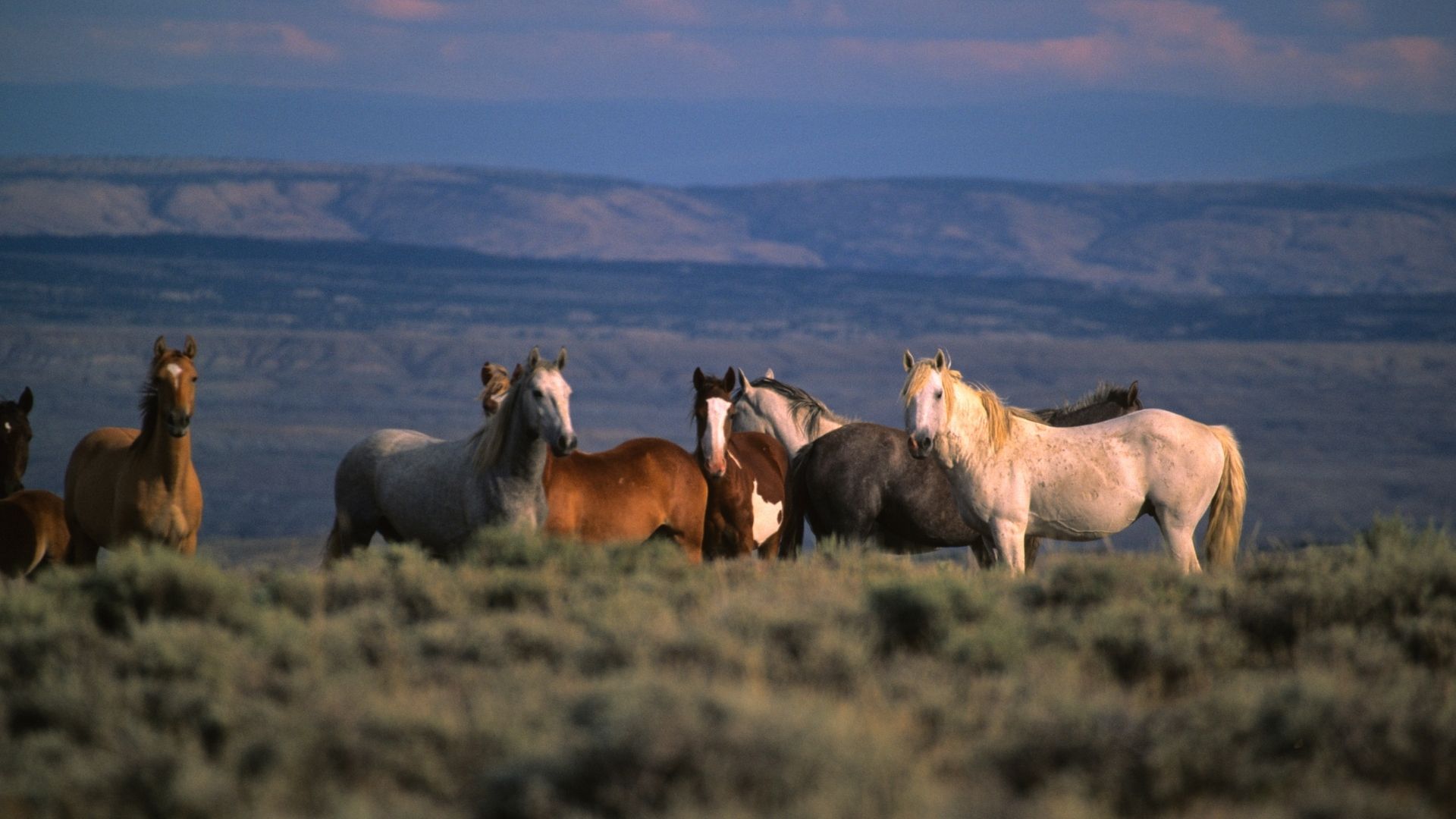Interior Budget Scapegoats Wild Horses on Public Lands for Climate Change
Biden budget justification calls for the mass roundup and removal of thousands of federally protected wild horses and burros
WASHINGTON (June 25, 2021) —Today the nation's leading wild horse advocacy group, the American Wild Horse Campaign (AWHC), harshly criticized the Biden Administration for continuing a Trump-era plan to eradicate federally-protected wild horses and burros from western public lands citing climate change in its latest proposed budget.
The renewed push came in the administration’s Fiscal Year (FY) 2022 budget justification, which asks Congress for an additional $35 million in taxpayer funds for the Bureau of Land Management (BLM) to conduct mass helicopter roundups and removals of up to 20,000 wild horses and burros, to be stockpiled in over-burdened government holding facilities where the threat of slaughter looms large.
The President’s budget justification reads,“Excess wild horse and burro populations undermine the health of public rangelands, undoing years of BLM investments and making the public lands less resilient to other stressors such as climate change. Such degraded landscapes can also directly contribute to climate change, as they are more susceptible to wildfire occurrence and accompanying carbon release."
“The Biden Administration cannot live up to its commitment to science and environmental protection by funding more wild horse roundups and not addressing one of the single most significant contributors to climate change: cows,” said Holly Gann Bice, Director of Government Relations for the AWHC. “The agency should instead take action today to adopt humane, scientifically-based on-range wild horse management strategies, including implementing fertility control and reducing livestock grazing in federally-designated wild horse habitat.”
Livestock significantly outnumber wild horses and burros on BLM land. Of the 155 million acres grazed by private livestock, only 27 million are shared with federally-protected wild horses and burros. Yet even on the 27 million acres of wild horse and burro habitat, the BLM allocates 3 out of every 4 units of forage to livestock. The BLM’s arbitrarily low population limits for wild horses and burros (AML) are not transparent nor are they based on science, according to the National Academy of Sciences.
"Polls show that over 80% of Americans support wild horse and burro protection and oppose their slaughter,” continued Gann Bice. "By prioritizing the livestock industry, the Administration is not only ignoring the American people but also abandoning science and its commitment to environmental protections."
According to the AWHC, as a member of Congress, Interior Secretary Haaland opposed additional funding for wild horse and burro roundups, advocating instead for humane birth control, but her budget justification reflects a prioritization of livestock industry interests over the protection of wild horses and burros.
AWHC is urging the House and Senate Appropriations Committees to adopt the Interior Appropriations language that has been proposed by U.S. Reps. Dina Titus (D-NV), Steve Cohen (D-TN), and over 40 other U.S. Representatives and 11Senators urging the agency to prioritize humane management using fertility control and other on-range methods over costly and inhumane roundup and removals.=
About the American Wild Horse Campaign
The American Wild Horse Campaign (AWHC) is the nation’s leading wild horse protection organization, with more than 700,000 supporters and followers nationwide. AWHC is dedicated to preserving the American wild horse and burros in viable, free-roaming herds for generations to come, as part of our national heritage. In addition to advocating for the protection and preservation of America’s wild herds, AWHC implements the largest wild horse fertility control program in the world through a partnership with the State of Nevada for wild horses that live in the Virginia Range near Reno.
###


